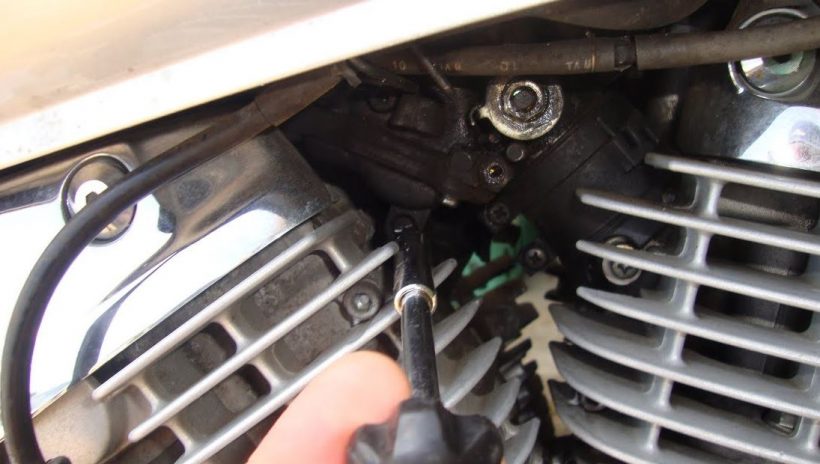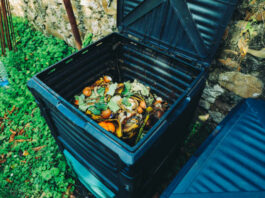Experts have suggested the right ways and maintenance techniques for Cleaning Snowblower Carburetor. And, we have compiled all that you need to know about the same. Read on to learn more.
A snowblower carburetor cleaner is an essential tool that must be kept clean to work efficiently. However, they often get dirty, and you occasionally have to clean a dirty carburetor to avoid an impeded performance. You need to ensure the right ways to clean snowblower carburetors.
Cleaning Snowblower Carburetor
And while you can remove it and scrub the carburetor from outside the blower, knowing how to clean a carburetor without removing it saves you a lot of time and stress – especially if you passionately dislike opening up machines. The good thing is that you don’t have to be a rocket scientist to hack it- as you will see shortly.
SHOP BEST-SELLING CARBURETOR CLEANERS.
- Click Here For The Best Carburetor Cleaner For Snowblower
- Click Here For The Best Replacement Carburetors & Parts
- Click Here For The Best Performance Carburetors
- Click Here For The Best Snow Blower Replacement Parts
- Click Here For The Best Snow Blowers
- Click Here For The Best Snow Removal Tools
But before we look at that, let’s briefly look at a few issues related to a snowblower’s carburetor.
Signs That Your Carburetor Needs Cleaning

The lingering question for many snowblower owners surrounds knowing when a carburetor needs cleaning. Here are the telltale signs –
- Starting Problems – If your carburetor is clean (and working smoothly), the snowblower engine should begin without much ado. Carburetors fail to start correctly when grimy because the dirt blocks the correct combination of fuel and air from traveling through their usual opening to the engine, bringing all manner of problems.
- Poor Idling – If you notice that it suddenly develops a habit of rough idling (your blower feeling irregular and bouncy when its engine is running) or idling too fast, it could be time to cleanse it.
- Uneven Acceleration – If it’s working correctly, it should accelerate without stumbling. So unbalanced or start-stop acceleration is another clear sign that you need to clear any deposits.
- Greedy Fuel Consumption – When it develops an increased appetite for gas, it could be that it’s dirty.
- Flooding – They are flooding results when too much fuel gets into the cylinders. A carburetor could be faulty or have debris in its needle valve, making it stick open, causing a spillage. What To Do Before choosing the right carburetor cleaner for snowblower? To effectively remove gum, varnish, and dirt from the carburetor, you must do some preliminaries.
- Revisit Your Owner’s Manual – To have it your way, it’s better to go back to your snowblower’s owner’s manual. Your motive will be to re-read everything about the carburetor. You will most likely come across rich information that may help you during the process. You can download the manual from the manufacturer’s website if you no longer have a copy.
- Check The Condition Of The Air Filter – Start by inspecting your air filter condition to ensure that only clean air (free of residuals) comes into your carburetor. If the air filter is clogged, your snowblower will continue emitting black smoke even after cleaning. Clean the filter or replace it if it’s nearing the end of its useful life.
Cleaning Your Snowblower’s Carburetor Without Removing It – Step By Step
You will use a cleaner to cleanse the carburetor while still in the snowblower. Carburetor cleaners are liquid solutions made to methodically dissolve layers of dirt and choke from the inside/outside of the carb to improve engine performance and reduce downtime.
Items You Need:
Step 1: Turn Off Your SnowBlower
Maintaining a machine when it’s running can be hazardous. So start by turning off your snowblower. Also, allow it a couple of minutes to cool off.
Step 2: Remove The Muffler

To fully access the carburetor, you have to remove the muffler. Using your socket wrench, remove the bolts/nuts holding the snowblower’s muffler in place. The manual should help you locate the damper on your engine assembly.
Step 3: Take Out The Gas Tank
Here you have to be mindful not to spill fuel. Still using your socket wrench, remove the bolts holding the snowblower’s gas tank. Then slide it carefully off and place it aside.
Step 4: Place an Empty Pan/Container Under the Bowl
You will be draining fuel from the carburetor in the next stage and doing this. You require a collecting container. So, site your snowblower’s carburetor bowl – check your manual- and place a container or pan under it.
Step 5: Drain The Fuel
It’s almost impossible to unclutter your carburetor without emptying fuel effectively. To do this, remove the nuts on the base of the bowl. Fuel will start draining from the carburetor. Wait until your carb is fully emptied before removing the pan.
Step 6: Clean The Bowl
By now, your carburetor’s bowl is loose. Twist it off. Now wet a piece of clothing with your carburetor cleaning solution. You can now clean the bowls inside.
Step 7: Scrub The Nuts
Some residue remains typically on the nuts. To remove such debris, spray a sufficient amount of your cleaning solution on the bowl’s nuts and scrub them using a wire brush.
Step 8: Clean Dirty Holes
Using a copper wire, clean out any visibly tarnished small holes in your carburetor. Also, spray around the carburetor’s throat to eliminate deposits from its throttle plate area.
Step 9: Blow Leftovers
Wipe out any other grim that may be pending by blowing it out using compressed air. For maximum efficiency, apply the compressed air can to each hole.
Step 10: Reassembly
Now all the grim should be out in the cold and your carburetor spotless. Reassemble the carburetor bowl and everything else by following the previous steps in reverse. Don’t forget to shine the outside of your carburetor plus all other linkages once you put everything back into place.
Precautions:
- The engine should be off and cool.
- Never spray on electrical connections.
- Some of the sprays deface painted surfaces. If you accidentally spray on such painted areas, wipe it off at once to avoid damage.
- Click Here For The Best Carburetor Cleaners
- Click Here For The Best Replacement Carburetors & Parts
- Click Here For The Best Performance Carburetors
- Click Here For The Best Snow Blower Replacement Parts
- Click Here For The Best Snow Blowers
- Click Here For The Best Snow Removal Tools
Wrapping Up
Knowing how to clean a carburetor without removing it saves you time and the stress of opening a carb. And the best part is that it’s as effective as the traditional carburetor removal approach. You will no longer experience hard starts, sputtering, bouncy idling, or related teething problems. So, don’t let carburetor problems suffocate your snowblower just because you aren’t a fan of opening stuff. Experiment with our steps, and you should become a pro over time.




